
Meetings supported by VarSITI and its projects in 2017
REPORTS
Data Analysis Workshop on Coronal and Interplanetary Shocks:
Data Analysis from SOHO, Wind, and e-CALLISTO Data
February 19÷25, 2017 , Mekelle, Ethiopia
40th Annual Seminar Physics of the auroral phenomena March 13÷17, 2017, Apatity, Russia
The 10 years of operation of
High resolution Neutron Monitor Database-NMDB
March 20÷23, 2017, Athens, Greece
The Second VarSITI General Symposium July 10÷15, 2017, Irkutsk, Russia
International Capacity Building School on
"Advanced Concepts in Solar-Terrestrial Coupling in the Context of Space Weather"
July 9÷14, 2017, Irkutsk, Russia
2nd International School on
Equatorial and Low-Latitude Ionosphere (ISELLI-2)
September 11÷15 2017, Lagos, Nigeria
13th International Workshop on
Layered Phenomena at the Mesopause Region (LPMR)
September 18÷22, 2017, Kühlungsborn, Germany
IAU Symposium 335
Space Weather of the Heliosphere: Processes and Forecasts
July 17÷21, 2017 Devon, UK
ISEST 2017 Workshop
September 18÷22, 2017 Jeju Island, Korea ![]()
The IRI 2017 Workshop
November 13÷17, 2017, Taoyuan City, Taiwan ![]()
VarSITI Newsletter Vol.16
ISEST Workshop 2017
(International Study of Earth Affecting
Solar Transients)
 Jie Zhang
Jie Zhang
 Kyungsuk Cho
Kyungsuk Cho
 Group photo of participants
Group photo of participantsThe annual ISEST International Workshop in 2017 was held in Jeju, Korea, September 18÷22, 2017. The ISEST, one of the four SCOSTEP/VarSITI projects, is aimed at bringing together scientists from different countries to interact and establish collaboration links that can effectively address the physical mechanisms of the origin, propagation, and Earth impact of solar transient events, including coronal mass ejections (CMEs), solar energetic particle events (SEPs) and corotating interacton regions (CIRs). Thirty-seven experts and students from eleven countries participated in this workshop. Leaders from all seven Working Groups (data‑1, theory‑2, simulation‑3, campaign‑4, Bs challenge‑5, SEP‑6 and MiniMax24‑7) made progress reports in the beginning and summary reports in the end of the workshop. Rigorous and fruitful discussons were a trademark of the five-day-long workshop. The meeting website is hosted at http://kswrc.kasi.re.kr/Workshop/isest2017 .
All presentations and WG reports, along with data products, are archived and publicly available at the ISEST WIKI Website at “http://solar.gmu.edu/heliophysics/index.php/Main_Page”.
VarSITI Newsletter Vol.16
The IRI 2017 Workshop
 Dieter Bilitza
Dieter Bilitza
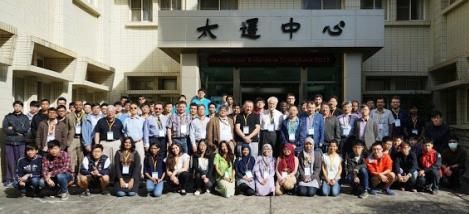 Group photo of participants
Group photo of participantsThe IRI-2017 Workshop brought together 85 researchers from 23 countries to discuss the status and improvement of the International Reference Ionosphere (IRI) model with special emphasis on the low latitude region and on the development of the Real-Time IRI. The 68 presentations were distributed into sessions covering ‘GNSS and Radio Occultation’, ‘Scintillation’, ‘F-peak and above’, ‘Irregularities and Anomalies’, ‘Storm Modelling’, ‘Ion Composition, Temperatures, and Ion Drift’, ‘New Inputs for IRI’, ‘Student Presentations’, ‘Final Discussions’, and a Poster Session. As a result of the presentations and discussions at the workshop significant improvements will be included with the next version of IRI.The best student presentations were rewarded with Gold, Silver and Bronze Awards. Jann-Yeng (Tiger) Liu was elected to become a new member of the IRI Working Group. The next IRI workshop is planned to be held at the Frederick University in Cyprus in September 2019. Papers from the workshop will form the core of a special issue of Advances in Space Research on “Improved Real-Time Ionospheric Predictions with IRI and Formosat–-3/COSMIC and other GNSS Data”. The workshop was supported by VarSITI, by the Taiwanese Ministry of Science and Technology, by NCU through its Center for Space and Remote Sensing Research (CSRSR) and its Graduate Institute of Space Science (GISS), and by COSPAR.
VarSITI Newsletter Vol.15
The Second VarSITI General Symposium
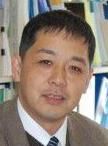 Kazuo Shiokawa
Kazuo Shiokawa
The 2nd VarSITI General Symposium was held at Irkutsk, Russia on July 10÷15, 2017 with the local support by the Institute of Solar-Terrestrial Physics of the Russian Academy of Science. This symposium was held with 162 participants from 26 countries to overview the progress of various activities in the four VarSITI projects at the fourth year of the program. The symposium consists of 7 sessions, 1) Solar and heliospheric drivers of earth-affecting events, 2) Long-term variation of the sun, geomagnetic activity, and climate, 3) Coupling between the earth's atmosphere and space and its relation to quiet and active sun, 4) Understanding the earth's space environment and its connection to space weather, 5) Sun to mud campaign event study, 6) Atmospheric response to solar variability and modulation of its impact on timescales from minutes to decades, and 7) Data archiving and analysis tools. A special issue of JASTP will be published with papers based on the Symposium presentations, with promotional access (free for the authors, 9 months free to download). The sponsors of the symposium are SCOSTEP, ROSTEC/FASO/RFBR/ISTP of Russia, JSPS core‑to‑core program/PWING Project/PSTEP Project/IEEE, Nagoya University of Japan, COSPAR, and NSF of USA.

VarSITI Newsletter Vol.15
International Capacity Building School on
Advanced Concepts in Solar-Terrestrial Coupling in the Context of Space Weather
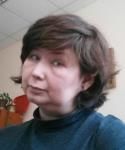 Larisa Kashapova
Larisa Kashapova
 Dibyendu Nandi
Dibyendu Nandi
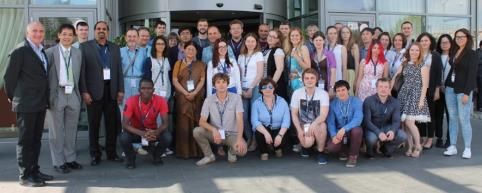 Group photo of School students and lecturers
Group photo of School students and lecturersThis school targeting graduate students and early-career scientists was held in Irkutsk, Russia
during 9÷14 July, 2017 on the sidelines of the VarSITI 2017 General Symposium.
The school – broadly based on the Space Weather Research, Education and Development Initiative –introduced the 35 participants to interconnected themes in space weather sciences through tutorial lectures and trained them in accessing and analyzing web-based space weather data products. The school was organized in collaboration with personnel from the Community Coordinated Modeling Center (CCMC/NASA), the Institute of Solar-Terrestrial Physics (Irkutsk, Russia), the Center of Excellence in Space Sciences India (CESSI, IISER Kolkata), Institute for Space-Earth Environmental Research (ISEE, Nagoya University) and the SCOSTEP-VarSITI program.
School Webpage: http://en.iszf.irk.ru/Space_weather_summer_school_2017
VarSITI Newsletter Vol.15
2nd International School on
Equatorial and Low‑Latitude Ionosphere (ISELLI‑2)
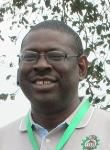 Babatunde Rabiu
Babatunde Rabiu
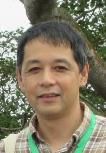 Kazuo Shiokawa
Kazuo Shiokawa
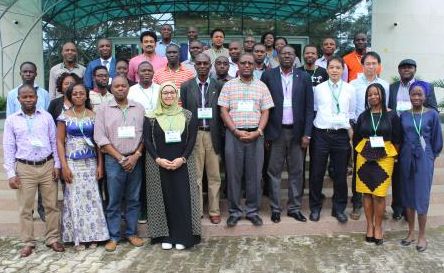 Group photo of School students
Group photo of School studentsThe 2nd International School on Equatorial and Low-Latitude Ionosphere (ISELLI‑2) was held at the Covenant University, Ota, Nigeria on 11÷15 September 2017. Participants are 38 students and young scientists from 7 countries from Nigeria, Uganda, Kenya, Egypt, Cote D'Ivore, Cameroon, and India. Fourteen lecturers are from Japan, US, Cote D'Ivore, and Nigeria introduced ionospheric dynamics, measurement techniques, Spread‒F/ plasma bubbles, and space weather. A training of SPEDAS GUI system under IUGONET was held on Thursday. Participants enjoyed lively discussions with the lecturers and mutual communications during this one-week school. This school was supported by Centre for Atmospheric Research (CAR) of NASRDA, Covenant University, Institute for Space‑Earth Environmental Research (ISEE) of Nagoya University, JSPS core-to-core program B. Asia‑Africa Science Platforms, Japan, International Center for Space Weather Science and Education (ICSWSE) of Kyushu University, PSTEP and PWING Projects, and SCOSTEP/VarSITI.
VarSITI Newsletter Vol.15
13th International Workshop on
Layered Phenomena at the Mesopause Region (LPMR)
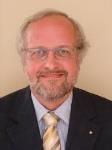 Franz‑Josef
Lübken
Franz‑Josef
Lübken
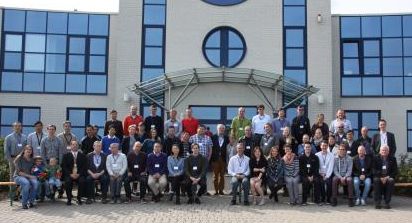 Group photo of participants
Group photo of participantsThe well established biannual workshop on 'Layered Phenomena in the Mesopause Region' took place from 18÷22 September 2017 at the Leibniz Institute of Atmospheric Physics (IAP) in Kühlungsborn.
Atotal of appr. 70 scientists and students from 11 countries participated in this workshop. A total of 48 oral talks and 12 posters were presented and highlighted the actual status and recent progress in our understanding of layered phenomena in the mesopause region. Presentations covered atmospheric observations, laboratory measurements, numerical modeling and theoretical studies. There was common sensus to publish the results from this workshop in a special issue of an international peer reviewed journal, most likely Atmospheric Chemis try and Physic (ACP).
The workshop was co-sponsored by the ROSMIC program of VarSITI (SCOSTEP), and the Leibniz Institute of Atmospheric Physics (IAP).
VarSITI Newsletter Vol.15
IAU Symposium 335 Space Weather of the Heliosphere: Processes and Forecasts
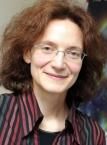 Claire Foullon
Claire Foullon
 Group photo of participants
Group photo of participantsThe recent IAU Symposium 335 on "Space Weather of the Heliosphere: Processes and Forecasts" held at the University of Exeter, UK in July 17÷21 2017, was linking various aspects of research in solar, heliospheric and planetary physics, emphasizing cross-disciplinary developments. We welcomed 185 participants (36.8% women) from 30 different countries and 21 accompanying persons, exhibitors or public lecturer. Thanks to IAU and cosponsors such as VarSITI, we supported 47 scientists from around the world to come and present their work. A number of excursions were organized to local facilities and places of interest. The poster competition engaged 28 young scientists and 34 judges, and 5 worthy winners were celebrated during the conference dinner. An active parallel education/public outreach program on the first 3 days engaged 14 of the participants and members of the LOC to share their enthusiasm about space weather with schools, teachers and the general public (~300 people).
| List of Participants | Photos from the Symposium | Oral Program |
ISWI Newsletter V9, No4, March 26, 2017
Data Analysis Workshop on
Coronal and Interplanetary Shocks:
Data Analysis from SOHO, Wind, and e-CALLISTO Data"
 Nat Gopalswamy
Nat Gopalswamy
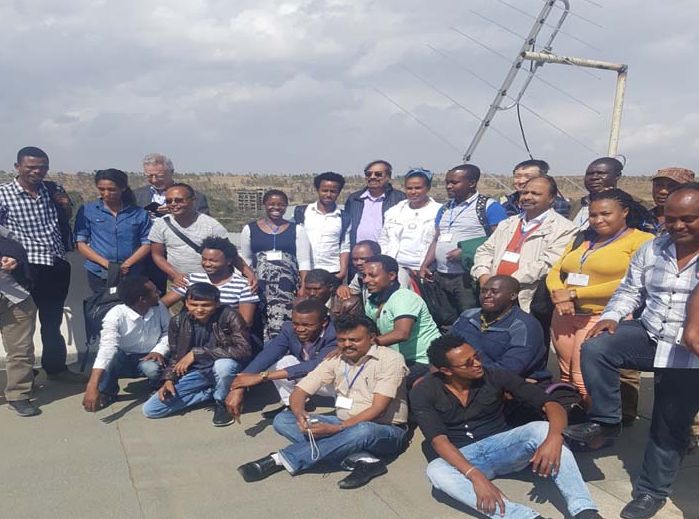 Participants gathered near the CALLISTO antenna
Participants gathered near the CALLISTO antennaDate and Venue: The training-workshop took place on 20÷25/February 2017 at the Mekelle University and partly at Axum Hotel in Mekelle City, around the Northern part of Ethiopia. The training team arrived at the Venue one day before, on 19 February 2017.
Lecturers: The members of the training team were Prof. Nat Gopalswamy, Dr. Seiji Yashiro, Dipl. Ing. Christian Monstein, Dr. Ebenezer, Dr. C. Kathiravan, Dr. Gebregiorgis Abraha, Dr. Tsegaye Kassa, Dr. Tsega Berhane.
Students and Lecturers
There were 39 students and lecturers in the workshop.
Out of these 7 students were from Africa
excluding Ethiopia, 2 from USA, 1 from Europe, 4 from India and the rest are from Ethiopian
Universities. The detail list is presented in the Final Report ![]() (12 pages)
(12 pages)
- Enabling MSc, PhD students and young researchers to be able to analyze space-based white-light coronagraph observations, Shock signatures at 1AU and radio spectral observations from space and ground.
- After the workshop, the participants will be able to perform correlative data analysis on coronal mass ejections and shocks, thus contributing to the progress of this important field in Sun-Earth connection.
- Improving our understanding of the origin of energetic particles in the heliosphere in association with coronal mass ejections (CMEs) and Corotating interaction regions (CIRs) propagation and evolutions
- To install e-Callisto instrument and make the data available on line and use for research applications
The Training Workshop The Program was started on 17 February 2017 by installing the e-Callisto instrument. The installation was led by Prof. Rajmal Jain and Christian Monstein The actual workshop was inaugurated on day 20 February 2017.
The lecturers talked about Studies of the Sun using Radio Dynamic Spectra, Catalog of Dynamic Spectra, Geomagnetic Storms and their influences on Magnetosphere and Ionosphere Regions, Ionospheric irregularities over Bahir Dar, Ethiopia during selected geomagnetic storms, the SOHO/LASCO CME Catalog and web-based analysis tools, Statistical Relationship between Solar flares and CMEs, Radio physics of the Sun, Radio Observations of CMEs and associated phenomena, and Hierarchical Relationship of pure DH, m-DH and DH-km type II bursts using the kinematic properties of the associated CMEs.
The training program had two components
I. Oral presentation: The first two days, all the lecturers presented their presentation. The presentation covered from the Sun to Earth, including Space Weather.
II. The second part of the workshop was covered in three days focusing on Python program and data analysis techniques from different instruments. The python training was provided by Christian Monstein and the data analysis training was provided by Nat Gopalswamy, Seiji Yashiro and Christian Monstein. The training was very effective and the students were highly motivated. They are now ready to do research by analyzing data from SOHO and e-CALLISTO for further publication.
III. Future plans and research collaboration were discussed among the lecturers.
The overall program of the workshop can be found in the Final Report ![]() (12 pages)
(12 pages)
| 1. Mekelle University Management 2. COSPAR 3. SCOSTEP/VarSITI 4. International Space Weather Initiative (ISWI) | 5. Adigrat University 6. Axum University 7. All lecturers |
The 10 years of operation of
High resolution Neutron Monitor Database-NMDB
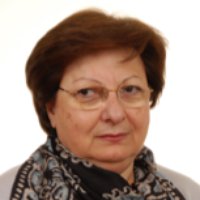 Helen Mavromichalaki
Helen Mavromichalaki
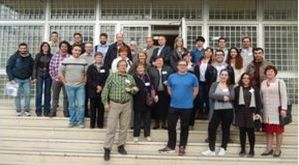 Group photo of participants
Group photo of participantsThe "10 Years Neutron Monitor Data Base" Workshop took place in Athens in March 20÷23, 2017, an event celebrating 10 years of continuous and reliable operation of NMDB community.
During this meeting more than 80 participants from 26 Institutes from 16 countries representing 45 Neutron Monitor Stations, had the opportunity to communicate their work and research,on a wide range of topics (cosmic rays, solar proton events, GLEs, space weather forecasting, etc), within scientific community.
The scientific program included 30 oral and 18 poster presentations by young students, scientists, researchers, well represent professors and experts on neutron monitor technology. The presence of the European Space Agency (ESA) was greatly welcomed.
This meeting served as a chance for all the groups of the neutron monitor collaboration and its visitors to reflect on their progress so far, to evaluate their current activities and applications and to lay the foundation for future plans.
VarSITI Newsletter Vol.13
40th Annual Seminar Physics of the auroral phenomena
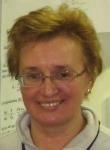 Irina Despirak
Irina Despirak
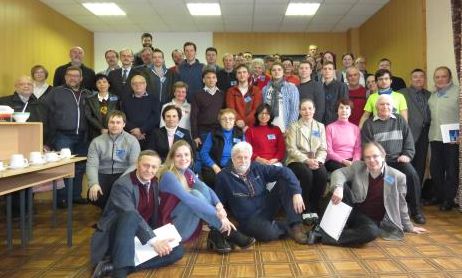 Group photo of participants
Group photo of participantsThe 40th Annual Seminar “Physics of the auroral phenomena” has been held during 13÷17 March 2016 in Apatity (Murmansk region, Russia). The organizer of the seminar is the Polar Geophysical Institute (PGI) of the Russian Academy of Science.
The main scientific goal of this Seminar was to
discuss newest results on the space physics processes in the polar cap, auroral and subauroral regions. The program covers different aspects of the solar-terrestrial relations, from the physics of the Sun and Solar Wind to the influence of the
solar activity on the biosphere.
About 90 representatives from 24 universities and research institutes distributed across Russia (Moscow, Nizhniy Novgorod, Saint-Petersburg, Yakutsk, Irkutsk, Kaliningrad, Murmansk, Apatity) and several scientists from abroad (China, Peru, Finland, Germany, Bulgaria) took part in the Seminar. The VarSITI program was a co-sponsor of the Seminar and partially supported the participation of some young scientists, students and invited speakers.
The received abstracts and program are available
at Abstracts Book ![]() and Programm
and Programm ![]() . The
Seminar will follow by publication of the proceedings, which will be available both online at
. The
Seminar will follow by publication of the proceedings, which will be available both online at
http://pgia.ru/seminar/archive/ and in print.